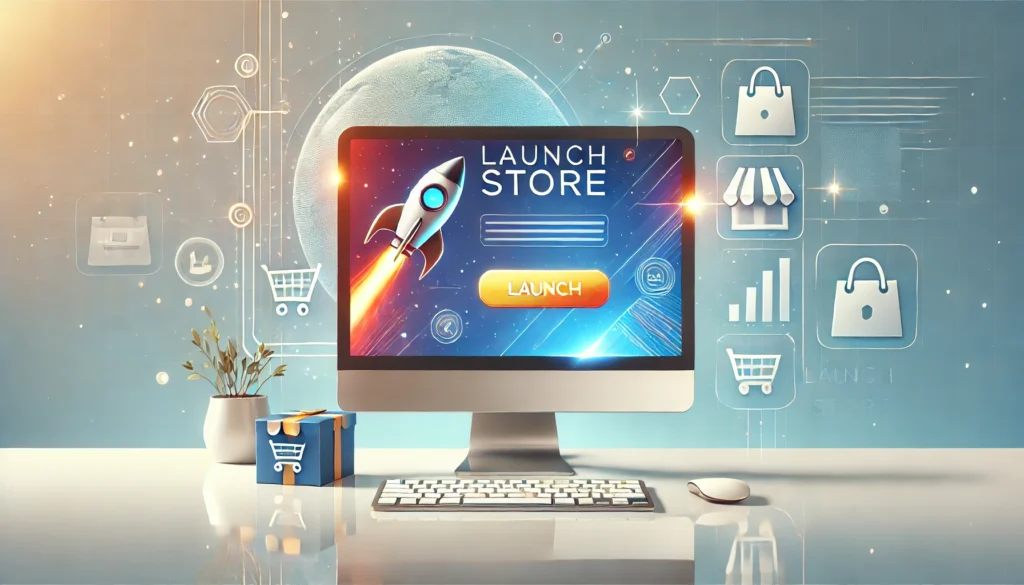How to Launch a Profitable Dropshipping Business in 2025

E-commerce has revolutionized the way we shop, and one business model that has consistently stood out is dropshipping. With low startup costs, minimal risk, and the ability to operate from anywhere, dropshipping continues to be a top choice for entrepreneurs in 2025. If you’re curious about starting your own dropshipping business, this guide will walk you through everything you need to know.
What is Dropshipping?
Dropshipping is a retail fulfillment method where you, as the seller, don’t keep the products you sell in stock. Instead, when a customer places an order, the product is purchased from a third-party supplier who ships it directly to the customer. You’re essentially a middleman, focusing on marketing and customer experience while leaving inventory management and shipping to the supplier.
Why Start Dropshipping in 2025?
Dropshipping remains a thriving business model for several reasons:
- E-commerce Boom: Global online sales are projected to grow exponentially, creating a massive opportunity for new businesses.
- Low Entry Barrier: You don’t need significant capital to start; just a laptop and an internet connection are enough.
- Flexibility: You can run your business from anywhere, making it ideal for digital nomads or those seeking additional income streams.
- Advanced Tools: AI-powered platforms, automation software, and analytics tools make running a dropshipping business easier than ever.

How to Start Your Dropshipping Business
Follow these steps to launch your own dropshipping business:
1. Choose a Niche
- Research trending products and identify a niche with high demand but low competition.
- Use tools like Google Trends, AliExpress, and industry reports to pinpoint potential products.
2. Find Reliable Suppliers
- Use platforms like Oberlo, Spocket, or AliExpress to source products.
- Test your supplier’s reliability by placing sample orders to check for quality and shipping times.
3. Set Up Your Online Store
- Choose an e-commerce platform like Shopify, WooCommerce, or BigCommerce.
- Create a professional, user-friendly website with clear product descriptions and high-quality images.
4. Optimize Your Store for Conversions
- Ensure your site is mobile-friendly.
- Add customer reviews, clear return policies, and a secure checkout process.
5. Launch Marketing Campaigns
- Use Facebook and Instagram ads to target specific demographics.
- Collaborate with influencers to promote your products.
- Implement email marketing to retain customers and encourage repeat purchases.
Top Tools and Platforms for Dropshipping
Here are some must-have tools to streamline your business:
- Product Sourcing: Oberlo, Spocket, CJ Dropshipping.
- E-Commerce Platforms: Shopify, Wix, WooCommerce.
- Marketing Tools: Google Ads, Facebook Ads Manager, Mailchimp.
- Analytics: Google Analytics, Hotjar, SEMrush.

Common Challenges and How to Overcome Them
Running a dropshipping business isn’t without challenges. Here’s how to handle them:
- Shipping Delays: Work with suppliers that offer fast shipping options or warehouses closer to your target audience.
- Customer Service: Provide clear communication and respond promptly to inquiries or complaints.
- Market Saturation: Differentiate yourself by offering exceptional customer service, unique products, or value-added content.
Marketing Strategies for Dropshipping Success
To make your dropshipping business successful, marketing is key. Here are some proven strategies:
- Social Media Advertising: Use targeted ads on platforms like Facebook, Instagram, and TikTok.
- SEO Optimization: Write blogs, optimize product pages, and use keywords to rank higher on search engines.
- Content Marketing: Create videos, infographics, and articles to build authority in your niche.
- Influencer Partnerships: Partner with influencers who align with your target audience.
Mistakes to Avoid as a Beginner
Avoid these common pitfalls when starting out:
- Choosing the wrong niche with low demand or high competition.
- Ignoring customer service, which can damage your reputation.
- Over-relying on a single supplier or product.
Conclusion
Dropshipping is a low-risk, high-reward business model perfect for entrepreneurs in 2025. By following the steps in this guide, you can start your journey toward building a profitable online store. Remember, consistency and continuous learning are key to long-term success.
Are you ready to take the leap? Start your dropshipping journey today!










